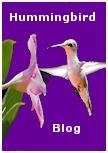Gardening terms and definitions
Below are some of the most popular gardening terms and their definitions including plant types, sun exposure, plant maintenance, soil conditions, hardiness zones for your area and other garden terms. We plan to keep adding to this page to help you with all your purple flower gardening needs.
Plant types -
Annual - A plant that lives for only one growing season, either
grown from seed or small plant to flowering and back to seed
again before dying off from the cold temperatures. Some annuals
in warmer climates can be considered perennials.
Biennial - Takes two years to flower and produce
seeds and the life cycle is two years or seasons long
Perennial - A plant that grows back year after
year for more than two years, usually dying off after
first frost and growing back in the Spring when ground
temperatures warm. Some perennials are short lived and
others live a long time. Dividing your perennials can help
extend there life span and make your plants look healthier.
Sunlight exposure -
Full sun - Six or more hours of direct sun.
Part sun or shade - Four to six hours of sun.
Shade - Less than four hours of sun.
Plant maintenance -
Deadheading - Removal
of faded flowers to extend the flowering season for that plant.
Dividing - Splitting of plants with the roots into sections to create additional plants. This will also make the new plant healthier. Should be done every three years or so when plants
look their best.
Pruning - Cutting back of branches to shape, control size and to
create healthy new growth. Most commonly done for trees and shrubs. Some
trees and shrubs have times when it is best to do the pruning. We prune our
azaleas as soon as they are done blooming.
Soil conditions -
Clay - Soil that compacts to a
solid form which makes planting, growing and drainage difficult.
Loam - Soil composed of clay, sand and organic matter. Quality soil
perfect for most gardening.
PH - Soil PH is a measurement of acidity or alkalinity of a soil. PH
above 7 is alkaline and a PH below 7 is acidic. Most plants do well with a
PH range of between 6 and 7. PH can be adjusted up with lime and adjusted
down with some types of fertilizers.
Sandy - Soil composed of small grains of sand that creates loose forming and well draining soil.
Planting temperatures -
First and last frost - Last frost is the time you start you Spring
planting and first frost would be in the Fall when your flowering ends.
Hardiness zone - Hardiness zones
are the areas where a plant or a tree can survive the winter's lowest
temperatures. You can find out your area's hardiness zone by looking at our
Zone map
Root structures -
Bare root - This is not a root structure but a term used in
gardening all the time. This is how dormant plants are sold
and shipped usually with little or no soil around their
roots. Trees, shrubs and some perennials are done this way.
Bulbs - Underground storage organ that roots from one end and grows
a plant with flowers from the other. Bulbs gather and
store nutrients during the year for the following growing
season. It's important to let the leaves fade away naturally
with bulb type plants because that is how they gather the
nutrients for the next year. Examples of some of the most
popular bulb type plants are tulips, daffodils, crocus,
hyacinths and allium.
Rhizome - Fleshy type stem or root storage structure that grows
horizontally just below the ground surface producing
new roots and plant shoots as it grows. Some of the
plants with this type root structure can become very
invasive. Some examples of plants that grow from this root
structure are astilbe, liriope and iris.
Tap root - Plant that grows one vertically downward main
root with many small lateral roots. This makes this type
plant very difficult to relocate or transplant. Balloon
flower is a plant with a tap root.
Tuber - Swollen type root with storage of nutrients similar to bulbs. Structurally a tuber is more elongated than a bulb
and grows in clumps. Some tuberous plants such as dahlias
are dug up in the fall and stored inside in the winter,
divided and replanted in the spring. We have done
this with the salvia black and blue for our hummingbird
gardening.

